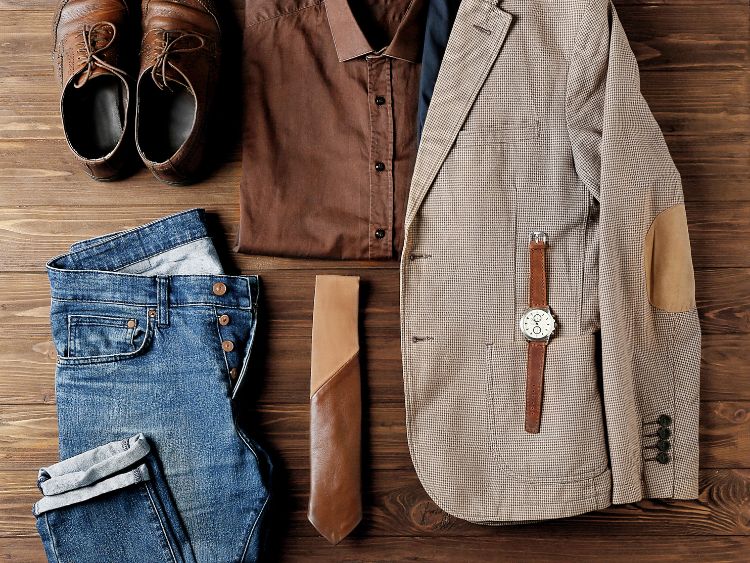The roaring twenties were more than just a decade of jazz and speakeasies; they marked a turning point in the world of fashion. Known for its rebellious spirit, the 1920s fashion revolutionized how people dressed, breaking away from the conservative styles of previous eras. The period gave birth to trends that not only captured the essence of freedom and expression but also reshaped modern fashion as we know it today.
If you’re fascinated by the allure of vintage clothing or want to understand the historical context that made the 1920s fashion so iconic, buckle up! We’re about to embark on a journey through time, filled with flapper dresses, cloche hats, and everything that made this era stand out.
The Rise of the Flapper: A New Standard for Women’s Fashion
One of the most iconic symbols of 1920s fashion was the rise of the flapper—a young, independent woman who was all about breaking the rules. Women’s roles in society were changing, and with that came a shift in how they presented themselves.
Gone were the restrictive corsets and floor-length gowns. Instead, women embraced shorter hemlines, loose-fitting dresses, and bold accessories. The flapper dress, typically knee-length with a straight silhouette, was designed for movement, perfect for dancing the night away at a jazz club. It was chic, bold, and a direct representation of the newfound freedom women were experiencing.
These dresses were often adorned with sequins, fringe, and beads, making them perfect for the energetic dances of the time, such as the Charleston. The flapper’s look was all about carefree fun, and her wardrobe reflected that.
Menswear in the 1920s: A Mix of Class and Casual
While women’s fashion was experiencing radical change, men’s fashion was also evolving. The 1920s fashion for men featured a blend of elegance and a more relaxed, casual approach to style. Three-piece suits were the go-to for formal events, often with wide-legged trousers, a fitted waistcoat, and a double-breasted jacket.
Interestingly, the influence of sportswear began creeping into men’s everyday attire during this time. Sweaters, plus fours (knee-length baggy trousers), and flat caps became popular for casual wear, offering a more laid-back look that still exuded sophistication. This combination of formal and casual attire created a versatile wardrobe for men, suitable for both work and play.
The Influence of Hollywood: Fashion on the Big Screen
During the 1920s, the emergence of Hollywood played a pivotal role in shaping fashion trends. Movie stars became style icons, and people began emulating the looks they saw on the silver screen. The glamorous gowns worn by actresses like Greta Garbo and Louise Brooks set the standard for high fashion, inspiring women to adopt a more polished and elegant style.
For men, actors like Rudolph Valentino became fashion icons, influencing the way men dressed and styled their hair. Valentino’s slicked-back hair and tailored suits were widely imitated, contributing to the spread of 1920s fashion across the globe.
The Signature Accessories: Cloche Hats, Pearls, and More
No discussion of 1920s fashion would be complete without mentioning the accessories that defined the era. Women of the 1920s adorned themselves with statement pieces that complemented their outfits and added a touch of glamour to their everyday looks.
- Cloche Hats: The cloche hat, with its bell-shaped design, became a must-have accessory. Often worn low on the forehead, it framed the face perfectly and added an air of mystery to the wearer.
- Long Pearl Necklaces: Pearls were the jewelry of choice for many women, often worn as long strands that were either doubled up or left hanging down. This simple yet elegant accessory was the epitome of 1920s sophistication.
- Feathered Headbands and Hair Accessories: For evening wear, feathered headbands and sparkling hair accessories were all the rage. These embellishments gave an added flair to the flapper look, making it perfect for a night on the town.
Makeup and Hairstyles: The Bold and the Beautiful
In addition to clothing and accessories, makeup and hairstyles played a key role in defining the 1920s look. Women embraced bold makeup, with dark, smoky eyes, dramatic rouge, and deep red lips being the hallmarks of the era’s beauty trends.
- The Bob Cut: When it comes to hairstyles, the bob was the cut of the decade. Short and sleek, the bob was a statement of rebellion against traditional femininity. Some women took it a step further by adding finger waves, giving their short locks a glamorous, sleek finish.
- Smoky Eyes and Red Lips: For makeup, women embraced a bolder look, with kohl-rimmed eyes and bright red lips becoming the go-to beauty standard. This dramatic style reflected the jazz-fueled, carefree attitude of the time.
The Evolution of 1920s Fashion: A Step Toward Modern Style
Looking back, it’s easy to see that 1920s fashion was more than just a passing trend. It was a movement that represented societal changes, a break from the rigid norms of the Victorian and Edwardian eras. The fashion choices made during this time paved the way for the modern styles we enjoy today.
By embracing shorter hemlines, looser fits, and more daring accessories, 1920s fashion allowed people to express themselves more freely. This era also introduced the idea of fashion as a reflection of one’s personality, a concept that continues to resonate in the fashion industry.
Frequently Asked Questions (FAQs)
Q: What fabrics were popular in the 1920s?
A: Fabrics like silk, chiffon, velvet, and wool were widely used in 1920s fashion. Women’s evening wear often featured luxurious fabrics such as silk and velvet, while more casual dresses were made from lighter materials like cotton.
Q: How did World War I influence 1920s fashion?
A: World War I played a significant role in shaping 1920s fashion. After the war, there was a desire for comfort and practicality in clothing, which led to simpler, less restrictive designs for both men and women. Additionally, the economic boom of the post-war era made high fashion more accessible to the masses.
Q: What did men wear casually in the 1920s?
A: Men’s casual wear in the 1920s often included sweaters, plus fours, and flat caps. These pieces offered a more relaxed alternative to the traditional three-piece suit, while still maintaining a polished appearance.
Q: Was 1920s fashion influenced by any particular designers?
A: Yes, designers like Coco Chanel and Jean Patou played major roles in influencing 1920s fashion. Chanel, in particular, is credited with popularizing the flapper style and introducing modern, minimalist designs that emphasized comfort and elegance.
Conclusion: Why 1920s Fashion Still Captivates Us Today
There’s no denying that 1920s fashion left an indelible mark on the world of style. It was a decade that dared to challenge conventions, celebrate individuality, and embrace change. From the revolutionary flapper dresses to the sophisticated menswear, the fashion of the 1920s continues to inspire designers and fashion enthusiasts today.
As we look back at this iconic era, it’s clear that the 1920s weren’t just about fashion—they were about freedom, expression, and a bold new approach to living life to the fullest.
Authoritative Links:
- www.fashionhistorymuseum.com/1920s
- www.historyextra.com/1920s-fashion
- www.metmuseum.org/exhibitions/1920s



